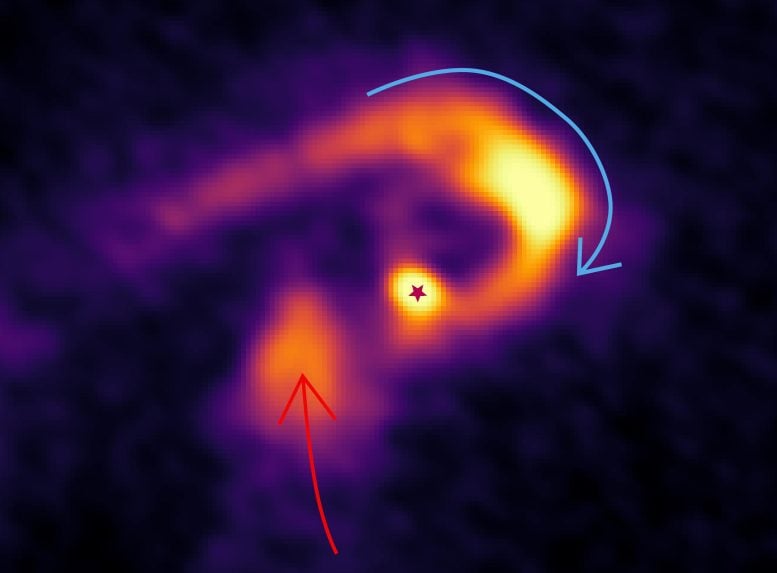
How do the universe’s biggest stars get so massive, when their own powerful radiation should blast away incoming material?
Astronomers using the ALMA telescope in Chile have uncovered a surprising answer: vast “cosmic streamers” of gas act like interstellar highways, funneling matter directly into young stars.
Giants Among the Stars
The universe is so vast that its scale is beyond human comprehension. Our sun alone is staggering in size, with a mass more than 330,000 times that of Earth. Yet even the sun is overshadowed by other stars that are many times larger.
Stars that exceed eight times the mass of the sun are classified as high-mass stars. These giants form quickly, releasing powerful stellar winds and radiation. Under normal circumstances, such forces should strip material away, preventing the stars from reaching such enormous sizes. Clearly, something is supplying them with fuel, but the exact process behind their rapid growth has long puzzled scientists.
The Mystery of High-Mass Formation
For years, astronomers suspected that enormous accretion disks (vast, rotating structures of dust and gas around a star) provided the needed material for young stars to bulk up. But new research from an international team including scientists at Kyoto University and the University of Tokyo points to a different answer.
“Our work seems to show that these structures are being fed by streamers, which are flows of gas that bring matter from scales larger than a thousand astronomical units, essentially acting as massive gas highways,” says corresponding author Fernando Olguin.
Gas Highways Feeding Stars
To test this idea, the researchers needed to see star-forming regions in much greater detail, since the birthplaces of high-mass stars are farther away than those of smaller stars. They turned to the Atacama Large Millimeter/submillimeter Array (ALMA), a powerful observatory in Chile made up of dozens of antennae capable of detecting faint dust and molecular emissions at millimeter wavelengths.
With ALMA’s precision, the team observed a young star being supplied by what appeared to be two distinct streamers. One of these streamers connected directly to the star’s central region and showed a velocity pattern consistent with rotation and possibly infall. This evidence indicates that the streamer is carrying enough material at a rapid pace to counter the feedback from the young star, building up the dense region found around its core.
Streamers Delivering Stellar Fuel
The research team expected to see a dust disk or torus of several hundred astronomical units in size, but they did not expect the spiral arms to reach as close to the central source.
“We found streamers feeding what at that time was thought to be a disk, but to our surprise, there is either no disk or it is extremely small,” says Olguin.
These results suggest that, independent of the presence of a disk around the central star, streamers can transport large amounts of gas to feed star-forming regions, even in the presence of feedback from the central star.
A New Path to Stellar Growth
Next, the team plans to expand their research by studying other regions to see if this is a common mode of accretion that results in the formation of massive stars. They also plan to explore the gas close to the star to determine whether they can confirm, or rule out, the presence of small disks.
Reference: “Massive extended streamers feed high-mass young stars” by Fernando A. Olguin, Patricio Sanhueza, Adam Ginsburg, Huei-Ru Vivien Chen, Kei E. I. Tanaka, Xing Lu, Kaho Morii, Fumitaka Nakamura, Shanghuo Li, Yu Cheng, Qizhou Zhang, Qiuyi Luo, Yoko Oya, Takeshi Sakai, Masao Saito and Andrés E. Guzmán, 20 August 2025, Science Advances.
DOI: 10.1126/sciadv.adw4512
Never miss a breakthrough: Join the SciTechDaily newsletter.